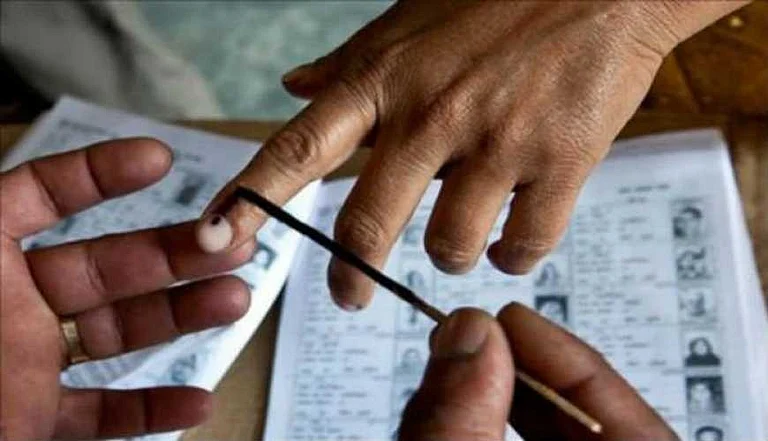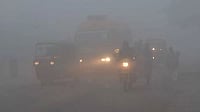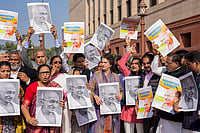In compliance with the Centre's line of work towards accomplishing zero paddy stubble burning incidents in the current season, Uttar Pradesh has recorded a whopping 65.65 per cent decline in stubble burning in the state within a span of five years from 2017 to 2022.
This has been achieved at a time when efforts are underway to put an end to crop burning in north India. To turn the objective into reality, the Centre is now rolling out funds under Crop Residue Management (CRM) scheme to Punjab, Haryana, Uttar Pradesh and Delhi - the four regions where stubble burning is deemed a leading cause of environmental degradation each winter.
Before getting into the details of the development, here’s a succinct account of what is stubble burning and why putting an end to the practice is imperative to save our nature.
Stubble burning - a potent threat to the environment
In simple terms, stubble burning is defined as a process of setting the straw stubble remnants on fire after finishing the harvesting procedure of paddy in a bid to clear the fields before sowing the seeds of winter crops a few weeks later. Stubble burning is known to be a very common agricultural practice in Punjab, Haryana, and Uttar Pradesh during the months of October and November.
Stubble burning releases a humongous amount of smoke from the burning crops which, alongside traffic pollution and a fall in wind speeds, leads to the formation of a thick layer of smog that blankets the national capital region every winter.
Since the past few years, doctors across the country have been reporting a considerable surge in the number of patients suffering from severe respiratory disorders owing to a degraded air quality index during the pre-winter and winter seasons. The list of ailments very frequently includes asthma and Coronary Obstructive Pulmonary Disease (COPD), which are directly associated with exposure to polluted and toxic air.
Besides meddling with the air quality index (AQI), stubble burning also causes major damages to soil health and reduces its fertility by lowering the levels of soil humus and fossil content. It also leads to the depletion of microbial populations and enzyme levels in soil.
Status of UP: What does the official statement say?
In an official statement issued on September 21, the Uttar Pradesh government has highlighted the success achieved by the state in curbing incidents of stubble burning by 65.65 per cent between 2017 and 2022.
In a bid to make the picture clearer, an elaborate presentation was made before Chief Secretary Durga Shankar Mishra which reportedly highlighted all the data in connection with the Promotion of Agricultural Mechanization for In-Situ Management of Crop Residue (CRM) scheme for the financial year 2022.
As per the presentation, the year 2022 registered a total of 3,017 incidents of crop residue burning, denoting a sharp 65 per cent decrease from 8,784 incidents in 2017.
To minimise the detrimental impacts of stubble burning on the environment, the agriculture department of Uttar Pradesh has also adopted the initiative of distributing waste decomposers to paddy crop growers. As per media reports, the process of distributing over 18 lakh kits of decomposers is already underway.
UP Govt’s directives
The UP chief secretary has issued further stipulated directives aiming to cease the practice of crop residue burning.
It has been reported that the agriculture department has been bestowed with the responsibility of conducting rigorous awareness and publicity campaigns through the means of IEC (Information, Education and Communication) programmes.
The directives also encompassed the importance of utilising print media for publicity and implementing awareness initiatives at various levels including district and Nyaya Panchayat levels. Moreover, the inclusion of radio jingles, television audio-visual clips and scrolling messages on TV was also evident in the awareness-raising endeavour.
The directives also encompassed the need to establish teams at various levels, including the village, Nyaya Panchayat, developmental block, tehsil and district to work together in raising awareness and engaging the community.
The alternate narrative
While the state government boasts about the progress they have made in terms of reducing incidents of stubble burning, last year's report represented an alternate narrative where UP chief secretary Durga Shanker Mishra had listed 18 districts which failed the stubble burning test. The list of districts include the names of Aligarh, Barabanki, Fatehpur, Kanpur Nagar, Mathura, Hardoi, Sambhal, Ghaziabad, Gautam Budh Nagar, Meerut, Saharanpur, Rampur, Kheri, Pilibhit, Shahjahanpur, Bulandshahr, Shamli and Bareilly.
It was reported last year that in those 18 districts, the decline in incidents of stubble burning was not as expected in the review undertaken by the state government.
Another report from last year suggested a direct rise in number of stubble burning instances in Uttar Pradesh. As per the report, till October 6, 80 crop burning events recorded in Uttar Pradesh in 2022 as opposed to 52 in 2021. In 2020, there were 101 incidents reported.


























